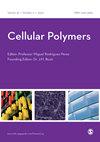密度分级聚脲弹性泡沫的冲击性能
IF 1.9
4区 医学
Q4 MATERIALS SCIENCE, BIOMATERIALS
引用次数: 0
摘要
运动装备的首要目标是在不增加重量的情况下实现更高水平的抗冲击保护,这促使人们对蜂窝状固体的密度分级进行研究。本文研究了密度分级聚脲弹性泡沫的冲击性能,包括不同的分级和界面策略。后者利用聚脲泡沫浆料的天然粘附特性,按顺序组装出具有无缝接口的分级结构。此外,传统的离散分级聚脲泡沫结构是使用散装聚脲粘合剂,通过单独粘合预制薄片来制造的。对六种密度分级泡沫结构进行了鉴定,包括具有自然粘合或粘合界面的双层和三层泡沫。此外,还测试了标准单密度聚脲和另一种基准泡沫作为对照。提取的样品使用仪器落重塔进行冲击加载。根据平均应力应变响应,使用三个动态性能指标(DPM)分析了泡沫的冲击功效,包括比能量吸收率(SEA)、吸收效率和局部屈曲引起的起伏。单密度聚脲泡沫的比能量吸收率最大,优于所有密度分级泡沫配置。密度分级有限是分级结构性能较差的原因。为了评估所研究的泡沫结构与头部损伤标准(HIC)之间的潜在相互关系,还进行了一项简短的生物力学案例研究,结果表明粘附三层聚脲泡沫的性能更优。最后,利用经验模型拟合了平均应力-应变响应,阐明了应变率和基础材料对整体冲击行为的影响。本文章由计算机程序翻译,如有差异,请以英文原文为准。
The impact performance of density-graded polyurea elastomeric foams
The overarching goal in sports gears to achieve higher levels of impact protection without an increased weight penalty motivated the pursuit of density gradation in cellular solids. The research reported herein studied the impact performance of density-graded polyurea elastomeric foams, including different gradation and interfacing strategies. The latter leveraged the natural adhesion properties of polyurea foam slurry to sequentially assemble graded structures with seamless interfaces. Moreover, conventional discretely graded polyurea foam structures were manufactured using bulk polyurea adhesive by individually bonding pre-fabricated sheets. Six density-graded foam configurations were characterized, including bi- and tri-layered foams with naturally bonded or adhered interfaces. Additionally, standard mono-density polyurea and another benchmark foams were tested as controls. Extracted samples were submitted to impact loading using an instrumented drop weight tower. The impact efficacy of the foams was analyzed using three dynamic performance metrics (DPMs), including the specific energy absorptivity (SEA), absorption efficiency, and local buckling-induced undulation, based on the averaged stress-strain response. The mono-density polyurea foam reported the largest SEA, outperforming all density-graded foam configurations. The limited density gradation is attributed to the inferior performance of graded structures. A brief biomechanics case study is presented to assess the potential interrelationship between the investigated foam structures and the head injury criterion (HIC), showing the superior performance of adhered trilayer polyurea foams. Finally, the average stress-strain responses were fitted using an empirical model, elucidating the effect of strain rates and base materials on their overall impact behavior.
求助全文
通过发布文献求助,成功后即可免费获取论文全文。
去求助
来源期刊

Cellular Polymers
工程技术-材料科学:生物材料
CiteScore
3.10
自引率
0.00%
发文量
9
审稿时长
3 months
期刊介绍:
Cellular Polymers is concerned primarily with the science of foamed materials, the technology and state of the art for processing and fabricating, the engineering techniques and principles of the machines used to produce them economically, and their applications in varied and wide ranging uses where they are making an increasingly valuable contribution.
Potential problems for the industry are also covered, including fire performance of materials, CFC-replacement technology, recycling and environmental legislation. Reviews of technical and commercial advances in the manufacturing and application technologies are also included.
Cellular Polymers covers these and other related topics and also pays particular attention to the ways in which the science and technology of cellular polymers is being developed throughout the world.
 求助内容:
求助内容: 应助结果提醒方式:
应助结果提醒方式:


